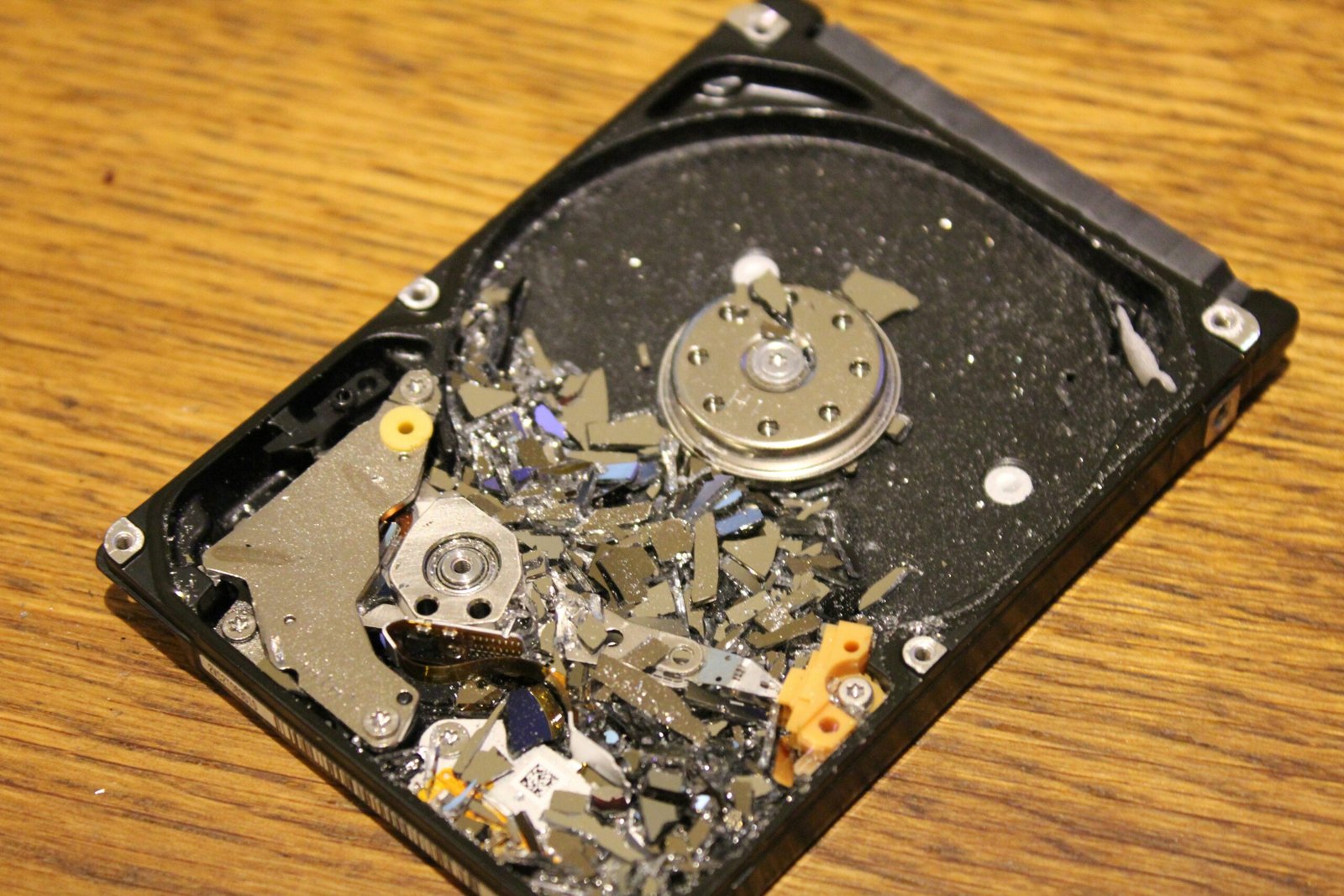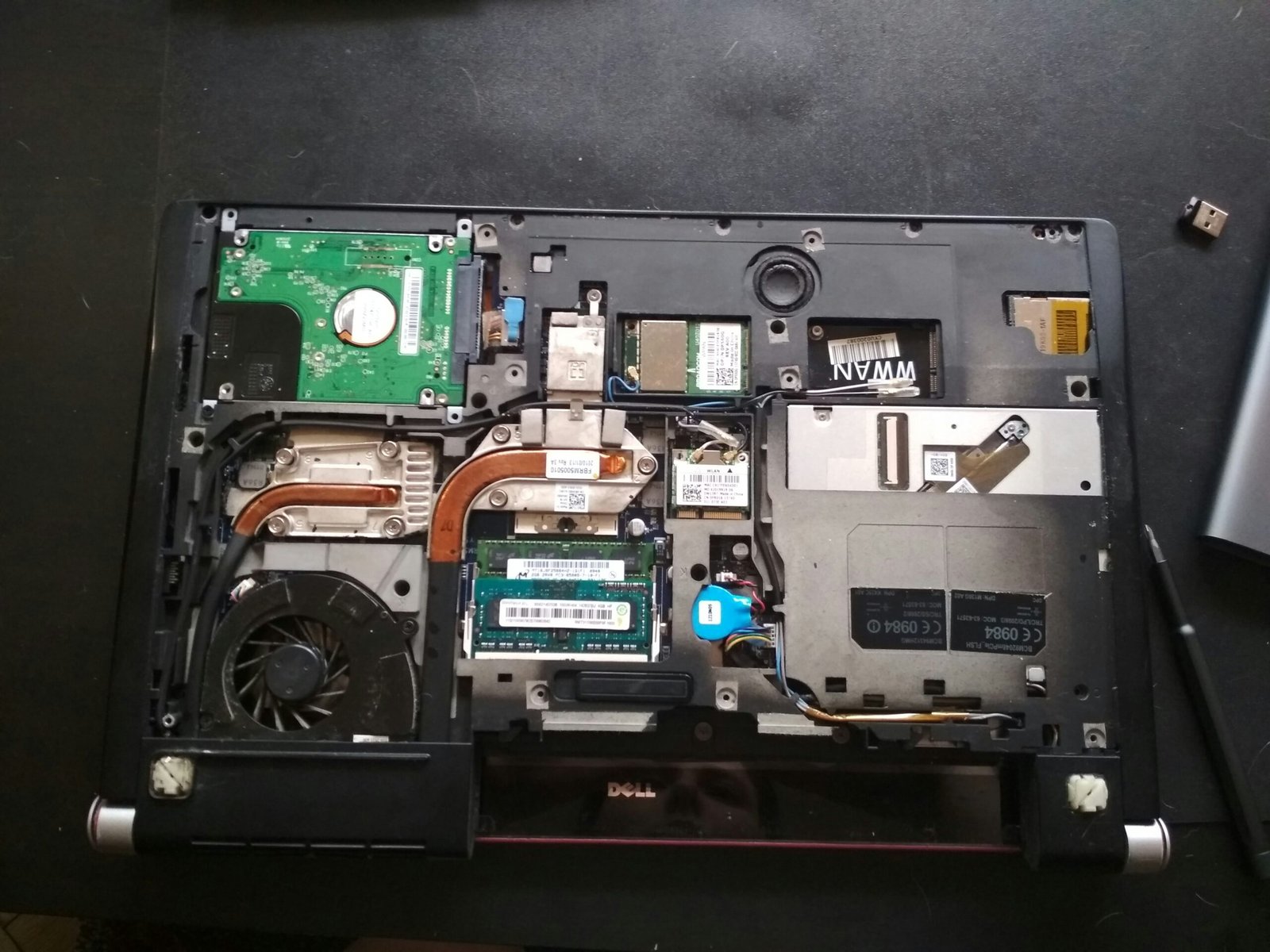
Introduction to Deleted Files
File deletion is a common action carried out by computer users. When a file is deleted, many believe that it is permanently removed from their system. However, this is often a misconception. In reality, the deletion process does not entirely obliterate the data from the storage medium. Instead, it typically involves removing the file’s reference in the file system, marking the space it occupied as available for new data. Until new information is written over this space, the deleted file remains recoverable.
It is crucial to understand the implications of deleting files and the specific conditions under which data loss occurs. When a file is placed into the recycle bin or trash, it is not instantly erased; rather, it can be restored until the bin is emptied. Moreover, even when a file has been deleted from the recycle bin, specialized recovery tools can often retrieve it from the underlying storage sectors. This distinction underscores the importance of employing proper data management practices to minimize unintentional data loss.
Another common myth is that formatted drives lead to the complete loss of all files. While formatting does prepare a drive for new data, it does not mean that the previously stored files are gone for good. Similar to regular deletion, formatting primarily updates file system metadata, making the old data inaccessible but not entirely eliminated. This aspect is vital for individuals who may inadvertently format drives or partition their storage devices.
Understanding the nature of deleted files not only aids in recovery efforts but also educates users on maintaining data integrity over time. By debunking these myths, individuals are better equipped to take proactive measures in protecting their valuable information, thus enhancing their overall digital resilience.
Common Scenarios for File Deletion
File deletion can occur in a variety of circumstances, each presenting its own challenges in recovery. Understanding these scenarios is crucial for effective data recovery strategies. One of the most prevalent situations leading to file deletion is accidental deletion. Users frequently misclick or mistakenly delete important files, often believing they are removing unnecessary data. This type of deletion typically goes to the recycle bin but can become more complicated if the bin is emptied or the files are deleted using “Shift + Delete”.
Another common scenario is system crashes. Such events can occur without warning, potentially resulting in a loss of unsaved documents or even files that were in use at the time of the crash. System failures might stem from hardware malfunctions, incompatible software, or power outages. These unpredictable incidents often leave users scrambling to recover lost data.
Formatting errors present yet another challenge for file recovery. This situation arises when a storage device is incorrectly formatted, erasing all previously stored data. Users may accidentally initiate a format process, or they may be trying to fix problems with a storage device. Unfortunately, formatting does not always equate to permanent deletion; in some cases, recovery software may still retrieve the files if they haven’t been overwritten.
Lastly, malware attacks pose a significant risk to file integrity. Malicious software can corrupt files, render them inaccessible, or even autonomously delete them. In such circumstances, it is essential to ensure that anti-virus protection is employed and system back-ups are routinely conducted. By understanding these common scenarios—accidental deletion, system crashes, formatting errors, and malware attacks—users can better prepare themselves for potential data loss and enhance their chances of successful file recovery.
Understanding How File Deletion Works
File deletion is a fundamental aspect of operating systems that involves multiple technical processes, often misunderstood by users. At first glance, when a file is deleted, it appears to vanish from the system; however, this is not entirely accurate. The manner in which operating systems manage deleted files is intricate, primarily involving the file system’s structure.
When a file is deleted, the operating system does not immediately remove the data from the hard drive. Instead, it marks the space occupied by the file as available for new data, creating an entry in the file system’s directory that signifies the file’s absence. This method, employed by most file systems like NTFS or FAT32, allows for quicker deletions without extensive data rewriting. Consequently, as long as the marked space is not overwritten by new data, the original file remains recoverable.
The Recycle Bin serves as a temporary safety net for deleted files. When a file is sent to the Recycle Bin, it remains physically intact on the hard drive until the user permanently deletes it or empties the Recycle Bin. This mechanism allows users to restore unintended deletions easily. However, once the bin is emptied, the data is subject to the same processes of file handling as any other deleted file.
Data overwriting complicates the recovery process further. Prematurely writing new files can lead to the original deleted file being irretrievably lost. This emphasizes the importance of immediate action when attempting to recover deleted files, as the likelihood of success diminishes as time progresses. Understanding these concepts helps users appreciate that deleted files may still be recoverable, fostering more informed decisions regarding file management and recovery solutions.
Initial Steps for Recovery
When you first discover that a file has been deleted, it is essential to act promptly to maximize the chances of recovery. The first step is to check the Recycle Bin. Most operating systems, including Windows and macOS, place deleted files in a temporary storage area known as the Recycle Bin (or Trash on macOS). Simply open the Recycle Bin and look for your deleted files; if you find them, you can restore them easily with a right-click and selecting “Restore.” This is the most accessible form of recovery and is often overlooked.
If your file is not located in the Recycle Bin, the next method involves utilizing file history or previous versions that may have been created automatically. On Windows, you can right-click the folder where the file was last located, then select “Restore previous versions.” This option allows you to view earlier versions of files and folders, potentially bringing back your needed data. For Mac users, the Time Machine feature can be accessed if it was previously set up, providing another possibility to recover lost files.
While you navigate these initial steps, it is crucial to avoid further use of the device from which the file was deleted. Continued use can lead to the overwritten data, making the recovery process increasingly difficult. This includes refraining from saving new files, installing software, or even updating the operating system. Data recovery software might be required in such instances, but only if standard methods fail and the device remains unchanged. Remember, acting swiftly and cautiously is vital in enhancing the chances of successful file recovery.
Using Software Tools for Recovery
Recovering deleted files can be achieved effectively through various software tools specifically designed for this purpose. These tools often fall into two categories: free and paid options, each with its own unique features and potential benefits. When choosing software for file recovery, it’s vital to consider the extent of your file loss, your operating system compatibility, and your overall recovery needs.
Among the free software options available, Recuva stands out due to its user-friendly interface and strong performance in recovering files from hard drives, memory cards, and other storage devices. This tool performs a deep scan to uncover files that may have been lost due to accidental deletion or system crashes. However, while it is effective, users may find that more complex recovery scenarios could require a paid solution for enhanced features such as the ability to recover multiple files simultaneously or improved customer support.
On the other hand, paid options like EaseUS Data Recovery Wizard offer more advanced capabilities. This software not only recovers deleted files but also retrieves lost partitions and is robust enough to handle data loss situations caused by system crashes or formatting. A significant benefit of using professional recovery software like EaseUS is its dedicated technical support and regular updates which ensure compatibility with the latest operating systems. Nonetheless, budget-conscious users might hesitate to invest in such tools, particularly when free alternatives exist.
When utilizing any recovery software, it is crucial to follow general instructions: first, install the tool on a different drive than the one from which you are trying to recover files. Next, run a scan to locate potentially recoverable files and carefully review the results. Select the files you wish to restore, ensuring to confirm their integrity prior to finalizing the recovery process. Ultimately, the choice between free and paid recovery tools should be guided by the specific requirements of the situation and the importance of the lost data.
Recovering Deleted Files from Different Devices
Recovering deleted files can vary significantly depending on the device in use. Understanding the specific recovery methods applicable to your device is essential for a successful restoration process.
For PCs, the first step is to check the Recycle Bin, where recently deleted files are stored temporarily. If the files are there, simple right-clicking and selecting “Restore” will recover them. In cases where files have been permanently deleted, utilizing data recovery software like Recuva or EaseUS Data Recovery Wizard can prove beneficial. These tools perform deep scans of the hard drive to locate recoverable files that are no longer visible to the operating system.
When working with a Mac, users can leverage the Time Machine feature if it has been previously set up. This allows for easy restoration of files with just a few clicks. If Time Machine was not available, third-party software options such as Disk Drill or Data Rescue may help recover lost files. These applications function similarly to Windows recovery tools and can retrieve files even after they have been deleted from the Trash.
For external hard drives and USB drives, the same principles apply as those for PCs and Macs. You can check for accidental deletion in the respective drive’s Recycle Bin or Trash. Utilizing specialized recovery software designed for removable devices will maximize chances of success. Programs like Stellar Data Recovery often have specific versions for external media that enhance recovery capabilities.
When it comes to mobile devices, both Android and iOS offer different recovery methods. For Android devices, apps such as DiskDigger can recover lost photos and files, provided the device is rooted. iPhone users can restore deleted items through iCloud or iTunes backups. It’s crucial to regularly back up devices to simplify the recovery processes when unexpected deletions occur.
Overall, employing the appropriate recovery methods tailored to each device will significantly increase your chances of successfully retrieving lost files.
Professional Data Recovery Services
When faced with the challenge of recovering deleted files, there are instances where enlisting the help of professional data recovery services may be the most prudent option. This is especially true when the data is critical, and the risks associated with DIY recovery methods could lead to permanent loss or further damage to the storage media.
Professional data recovery firms possess specialized tools and expertise needed to retrieve lost files from various storage devices, including hard drives, SSDs, USB drives, and even memory cards. Their capabilities extend beyond simple recovery tasks; they can handle complex scenarios such as physical damage, severe corruption, and logical failures. Users can expect a detailed diagnostic process that identifies the nature of the data loss and offers a transparent recovery plan outlining the likelihood of success and associated costs.
Several factors influence the cost of professional data recovery services. The complexity of the recovery situation is a significant determinant, as urgent cases requiring advanced recovery techniques are generally more expensive. Additionally, the type of storage device and the specific recovery method employed can also affect pricing. Transparency in pricing is vital, so it is advisable to seek quotes from multiple service providers, ensuring clear communication regarding the expected outcomes and any potential fees involved.
When selecting a reputable data recovery company, it is essential to conduct research. Review customer testimonials, check for certifications and industry affiliations, and inquire about their success rates. Establishing whether a company offers a “no data, no fee” policy can also provide added peace of mind, ensuring that you do not incur costs unless they successfully recover your files. By taking these steps, individuals can make informed decisions when considering professional data recovery services, ensuring that they choose a provider that best meets their needs.
Preventing Future Data Loss
Preventing future data loss is a crucial aspect of effective data management, significantly impacting both personal and professional environments. One of the most effective strategies in ensuring data integrity is the implementation of regular backup routines. This practice not only safeguards critical information but also provides peace of mind knowing that files can be restored in the event of unexpected deletion or corruption. It is advisable to establish a consistent schedule for backups, which can be daily, weekly, or monthly, depending on how frequently data changes. Utilizing both external hard drives and cloud storage solutions can enhance redundancy, ensuring that copies of important files are available in multiple locations.
Cloud storage solutions, such as Google Drive, Dropbox, or OneDrive, offer an efficient way to enhance file security and accessibility. These platforms automatically sync files and provide options for version history, allowing users to recover previous versions of documents in case of accidental modifications or loss. Moreover, the ability to access files from any device with internet connectivity makes cloud storage a convenient option for users across diverse settings. It is important to assess the features and security measures of cloud services to select the one that best meets your needs for both accessibility and data protection.
In addition to regular backups and cloud solutions, implementing a robust file recovery system can further mitigate risks associated with data loss. Various software applications specialize in file recovery, capable of retrieving deleted data from hard drives, SSDs, and even mobile devices. Familiarizing oneself with such tools provides an extra layer of security, enabling users to quickly address issues when they arise. Alongside these practices, fostering good digital habits, such as organizing files systematically and avoiding unnecessary deletion, plays a significant role in preventing data loss in the future. By prioritizing these strategies, users can effectively protect their digital assets against potential threats.
Conclusion and Final Thoughts
In this comprehensive guide on recovering deleted files, we have explored the various methods and tools available to restore lost data. A significant takeaway is that, although deleted files may seem unrecoverable, they are frequently still present on your storage device until overwritten by new data. Therefore, acting swiftly is crucial in the recovery process. The initial steps should involve ceasing all usage of the affected storage medium immediately after data loss occurs, as this can significantly enhance the chances of successful recovery.
Utilizing the right recovery tools is another vital aspect of the process. Numerous software options exist, each varying in features and effectiveness. Popular utilities such as Recuva, EaseUS Data Recovery Wizard, and Disk Drill can assist in scanning through storage devices to locate and restore deleted files. It is essential for users to select the right software that aligns best with their specific needs and the type of data they wish to recover.
Moreover, practice preventive measures to mitigate future data loss risks. Regularly backing up your data using cloud services or external storage can minimize the impact of accidental deletions or hardware failures. Familiarizing oneself with data recovery best practices will also prepare users to act efficiently in the event of file loss. By understanding the processes and tools available, individuals can better equip themselves for future challenges involving deleted files.
To conclude, while deleted files are not necessarily lost forever, prompt action and the use of appropriate tools are critical for successful data recovery. Staying informed on data management and recovery methods can significantly enhance the chances of retrieving lost files, ensuring users retain access to their important data when it matters most.








